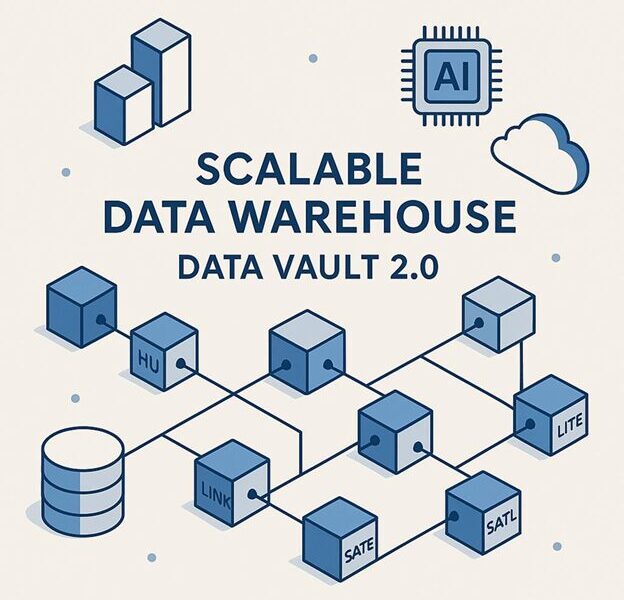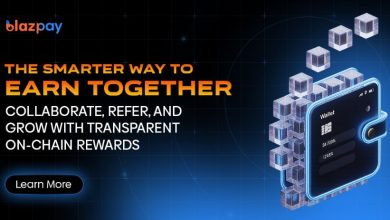Engineering Resilience: Data Vault Visionary Shaping the Future of Intelligent Data Warehousing

In an era of exponential data growth and rising regulatory scrutiny, traditional data architecture is buckling under pressure. But thanks to the pioneering research of Bharat Kumar Chaturvedi, a new paradigm is emerging—one where metadata-driven automation, vault-centric modeling, and cloud-native execution converge to deliver resilient, scalable, and intelligent data ecosystems.
Chaturvedi’s body of work on Data Vault 2.0 presents a research-driven blueprint for how modern enterprises can tame complexity, embrace agility, and embed governance directly into the fabric of their data systems.
Metadata-Driven Ingestion: Where Automation Begins
One of the most distinctive features of Chaturvedi’s research is a metadata-first architecture that automates the translation of source schema changes into Data Vault components—Hubs, Links, and Satellites. In his published work, he demonstrates how such automation can reduce the onboarding time for new data domains by over 60%, while eliminating fragile, manually built ETL pipelines.
This capability is especially critical in sectors like finance, where data sources are diverse, evolving, and compliance timelines are unforgiving. The system not only adapts to change—it thrives on it.
Transformation Reimagined: From Hardcoded Rules to Adaptive Models
Chaturvedi’s research also extends into vault-aware transformation logic, where relationships between datasets are inferred and structured using intelligent schema mapping. Instead of rigid SQL-based pipelines, transformations are treated as metadata— versioned, governed, and abstracted from execution engines.
This approach not only accelerates development cycles but also ensures transparency— every transformation is traceable and explainable, a requirement increasingly demanded by auditors and regulators alike.
Cloud-Native Deployment: Elasticity by Design
As organizations shift to the cloud, the ability to align infrastructure with data volatility becomes paramount. Chaturvedi’s models support containerized ELT workloads, orchestrated by tools like Airflow and dynamically scaled in platforms such as Snowflake and BigQuery.
This elastic design—documented in his publications—delivers measurable benefits:
- Cost savings through dynamic workload optimization
- Faster processing for high-volume reporting cycles
- Seamless promotion across dev, test, and prod environments
The result is not just performance—it’s precision. Resources are used where needed, when needed.
End-to-End Lineage and Governance Built-In
One of the most innovative aspects of Chaturvedi’s work is how governance becomes an embedded feature rather than an afterthought. His data architecture includes graph- based lineage tracing, enabling analysts, auditors, and regulators to:
- Trace any data point to its origin
- Understand every transformation rule applied
- Access anomaly reports and quality scores in real-time
This governance layer isn’t bolted on—it’s core to the platform. It elevates trust in data and enables faster, more confident decision-making.
Research as Enablement: From Framework to Community
Chaturvedi’s contribution goes beyond systems. His research has informed the development of Data Vault Centers of Excellence, offering reproducible methods to:
- Train teams in metadata-driven vault modeling
- Apply coding standards and maturity models
- Onboard data sources autonomously while maintaining traceability
By empowering practitioners with frameworks and tools, he bridges the gap between theory and practice—turning published innovation into actionable strategy.
AI-Augmented Pipelines: The Future Is Self-Optimizing
In his most recent publications, Chaturvedi explores how AI can complement the Vault paradigm. His vision includes:
- LLMs to auto-map regulatory text to schema definitions
- Synthetic data generation for test scenarios and anomaly detection
- Reinforcement learning to balance cloud workloads across zones
The goal? To create autonomous data ecosystems—systems that not only handle change but anticipate it, self-correct it, and optimize in real time.
Final Word
Bharat Kumar Chaturvedi’s research isn’t just a technical innovation—it’s a strategic realignment of how enterprise data systems are designed, governed, and evolved. By fusing the rigor of Data Vault 2.0 with the intelligence of metadata and the scalability of cloud, his work delivers a platform built for the future.
As the industry moves toward more explainable, auditable, and AI-enhanced systems, Chaturvedi’s frameworks are already there—setting the pace and offering a clear path forward.

Source: Engineering Resilience: Data Vault Visionary Shaping the Future of Intelligent Data Warehousing




